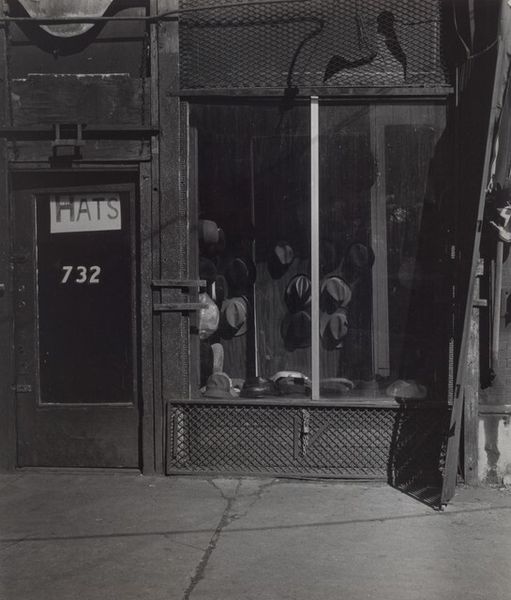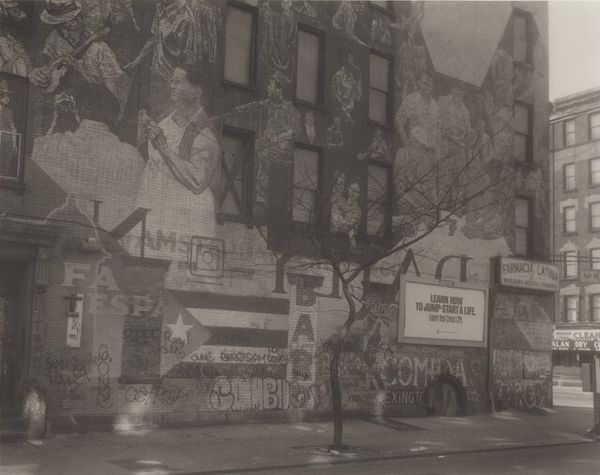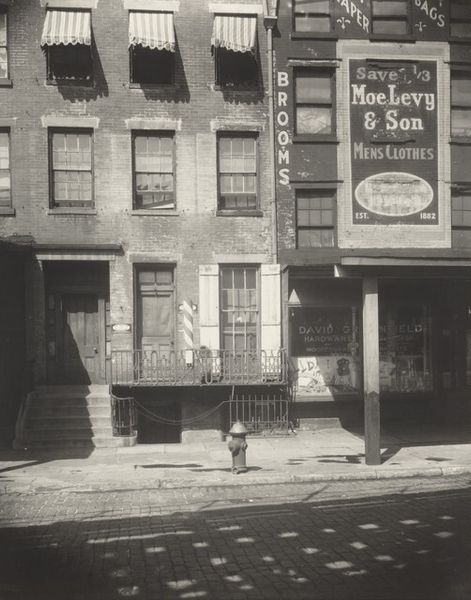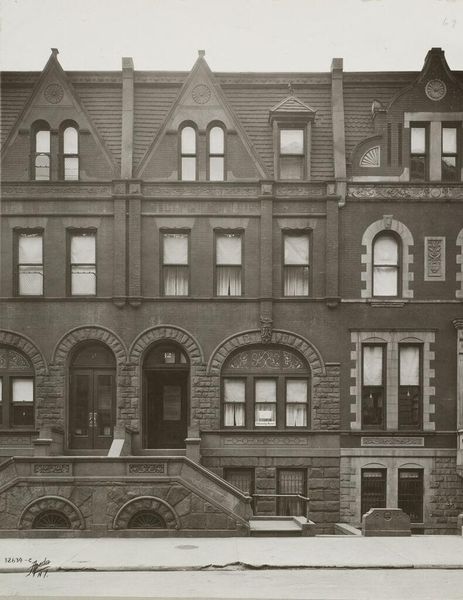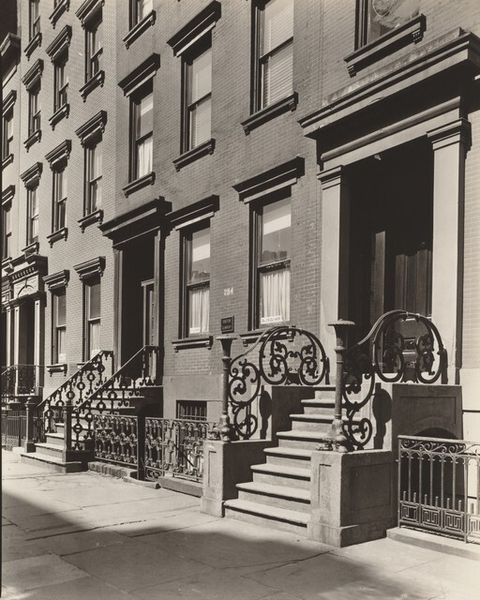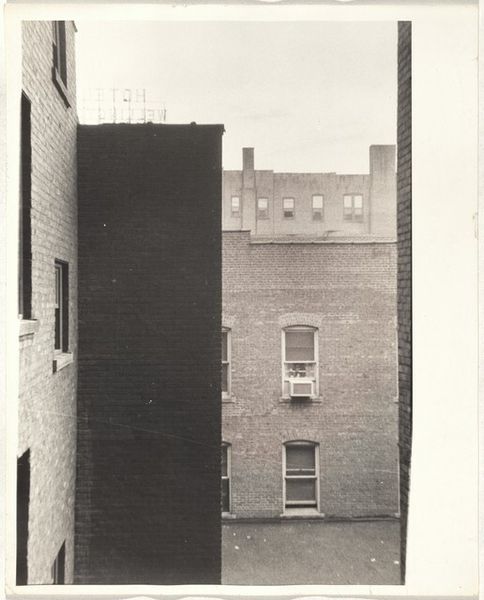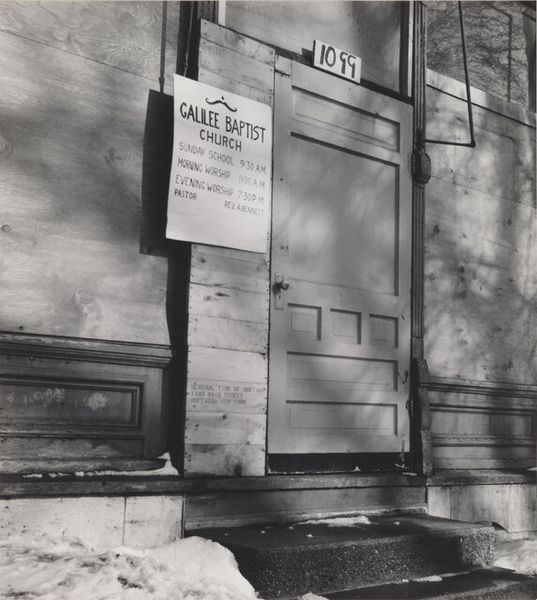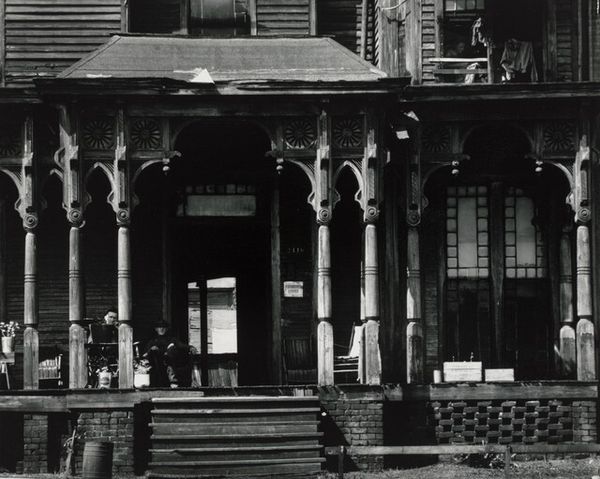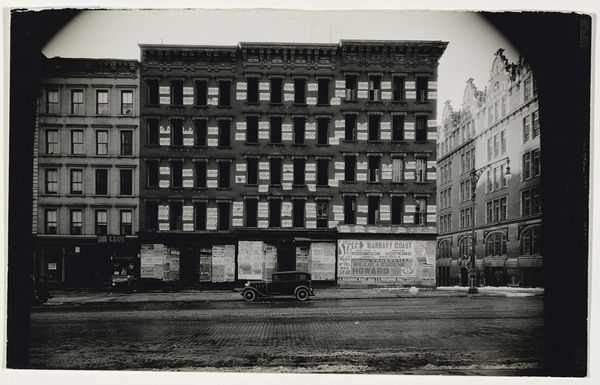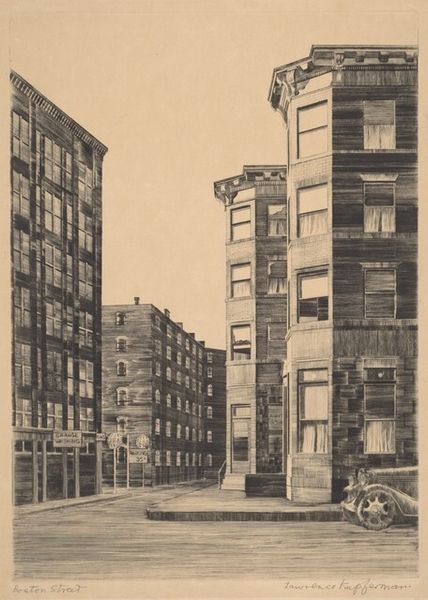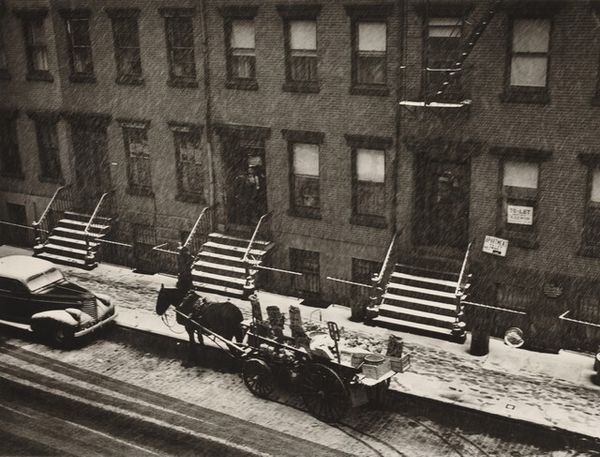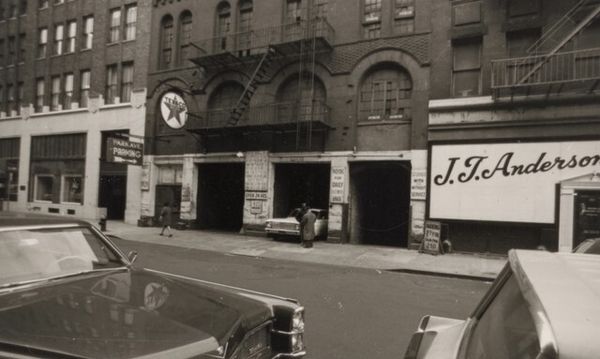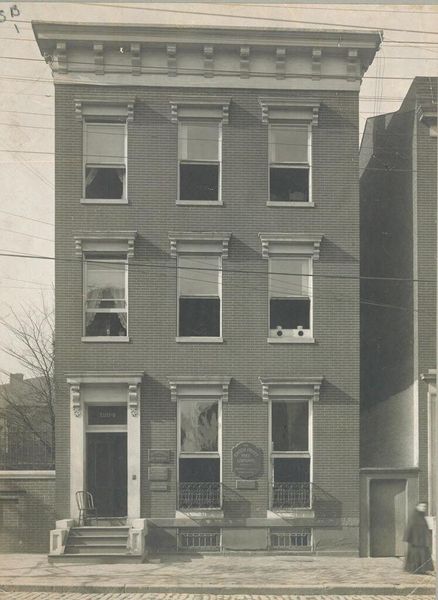
photography
#
black and white photography
#
sculpture
#
black and white format
#
archive photography
#
street-photography
#
photography
#
monochrome photography
#
ashcan-school
#
realism
#
monochrome
Dimensions: sheet (trimmed to image): 18.3 x 23.3 cm (7 3/16 x 9 3/16 in.) mount: 24.7 x 28.3 cm (9 3/4 x 11 1/8 in.)
Copyright: National Gallery of Art: CC0 1.0
Editor: This is Helen Levitt’s “New York” from around 1938, a black and white photograph that’s… well, it feels gritty, very urban. The reflections and graffiti give it a layered, almost ghostly quality. What do you see in this piece, beyond the surface? Curator: I see a powerful commentary on urban life during the Depression. Levitt, associated with the Ashcan School, often captured the unvarnished realities of everyday life, particularly children at play. The graffiti here—"Bill Jones Mother is a Home"—acts as a poignant contrast to the boarded-up door and decaying facade. It speaks to longing, perhaps a sense of lost domesticity amid economic hardship. Do you think Levitt is simply documenting, or is she making a statement? Editor: I think there's definitely a statement. The composition, the way the reflections distort the buildings... it's not just a snapshot. It's highlighting a certain kind of reality, isn't it? Curator: Exactly. Think about the context: New York in the late 1930s. The city was grappling with poverty, inequality, and social unrest. Levitt's work often explores how these issues impacted the lives of ordinary people, especially children and marginalized communities. The framing of the shot makes it seem as though she's showing who or what is absent, or unseen. Is it possible the 'Bill Jones' refers to one of the neighborhood children and Levitt is showing what has occurred to them and others in their social group? Editor: That reading hadn't occurred to me, but with the boarded-up buildings you make an extremely insightful and persuasive case! Seeing it now within that context makes the photograph so much richer and sadder. Curator: Indeed. Levitt compels us to consider the social forces at play, prompting crucial questions about representation, agency, and the enduring impact of economic disparity on communities. Ultimately, her "New York" isn't just a photograph; it's an invitation to witness a specific, often overlooked chapter of American history and its ongoing legacy. Editor: Thanks for this, it helps to look deeper and to see what art pieces can tell us if we connect their social backgrounds to art.
Comments
No comments
Be the first to comment and join the conversation on the ultimate creative platform.
